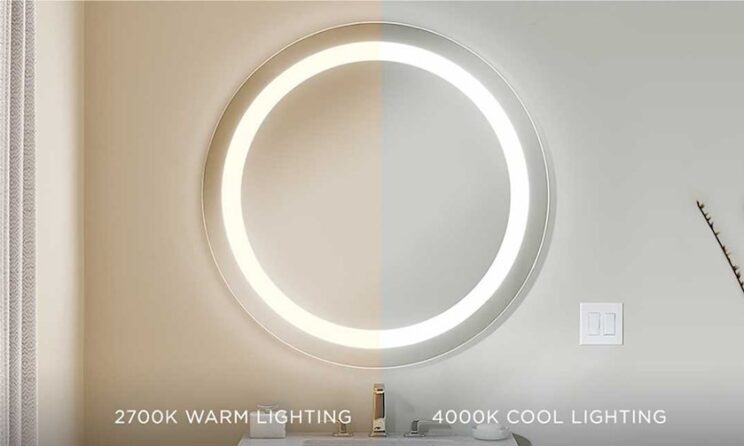
The concept of circadian lighting has been gaining attention as people become more aware of the connection between daytime, night time and overall health. This innovative approach of lighting design mimics the natural progression of sunlight throughout the day, aligning with the body’s internal clock, or circadian rhythm. By doing so, circadian lighting has the potential to enhance physical, mental, and emotional well-being.
What Is Circadian Lighting?
Circadian lighting is a lighting system designed to support the body’s natural circadian rhythm, which regulates sleep, wakefulness, and other natural responses over a 24-hour cycle. This rhythm is influenced by environmental light, with blue-rich daylight in the morning stimulating activity and warmer, dimmer light in the evening promoting relaxation.
By adjusting the color temperature and intensity of artificial light to reflect the natural changes in sunlight, circadian lighting helps create an environment that feels in tune with nature.
The Science Behind Circadian Lighting
The circadian rhythm is governed by the suprachiasmatic nucleus (SCN) in the brain, which responds to light signals detected by the eyes. Exposure to bright, blue-rich light in the morning suppresses melatonin production, signaling the body to wake up and become alert. Conversely, warmer, dimmer light in the evening encourages melatonin release, preparing the body for sleep.
Circadian lighting leverages this understanding by using dynamic lighting systems that shift throughout the day. These systems adjust light levels and color temperatures automatically, providing the right type of light at the right time to support the body’s natural processes.
How Circadian Lighting Impacts Health and Well-Being
Let’s see how circadian lighting harmonizes with your natural body clock to improve sleep, mood, and overall well-being.
Improved Sleep Quality
One of the most significant benefits of circadian lighting is its ability to regulate sleep patterns. Reducing exposure to blue light in the evening and promoting melatonin production, helps individuals fall asleep more easily and enjoy deeper, more restorative sleep.
Enhanced Productivity and Focus
In workplace or educational settings, circadian lighting can improve focus and productivity. Exposure to bright, blue-enriched light in the morning boosts alertness and cognitive function, helping individuals perform better throughout the day.
Reduced Stress and Better Mood
Circadian lighting creates environments that feel more natural and less stressful. The gradual changes in light intensity and color temperature can help stabilize mood, reduce anxiety, and even alleviate symptoms of seasonal affective disorder (SAD).
Healthier Aging
For older adults, circadian lighting can support better sleep. It may help mitigate disruptions to the circadian rhythm that often occur with age.
Applications of Circadian Lighting
Circadian lighting is versatile and can be applied in various settings:
- Homes: Create a healthier living environment by integrating circadian lighting into bedrooms, living areas, and kitchens.
- Offices: Enhance employee productivity and well-being with lighting that adapts to the workday.
- Healthcare Facilities: Support patient recovery and comfort by mimicking natural light cycles.
- Schools: Help students stay alert and focused during lessons with well-timed lighting adjustments.
Conclusion
Circadian lighting offers a transformative approach to indoor lighting, aligning artificial light with the natural rhythms of the human body. By promoting better sleep, improving focus, and enhancing mood, it has a profound impact on health and well-being. Whether in homes or healthcare settings, adopting circadian lighting systems can create spaces that not only look good but also support a healthier lifestyle.





